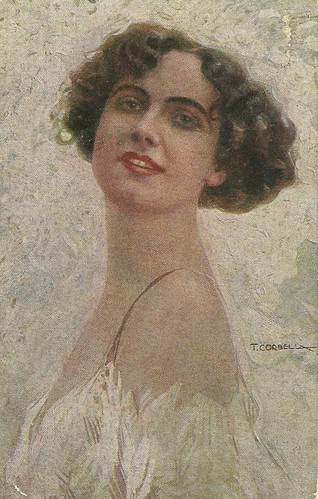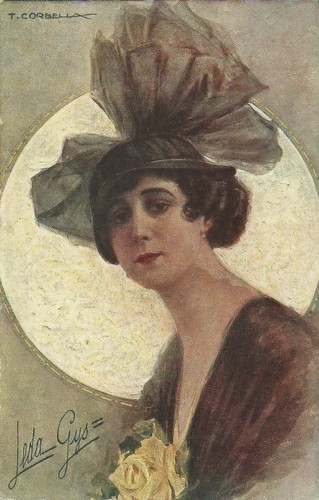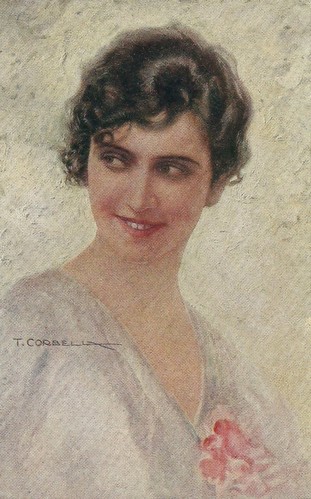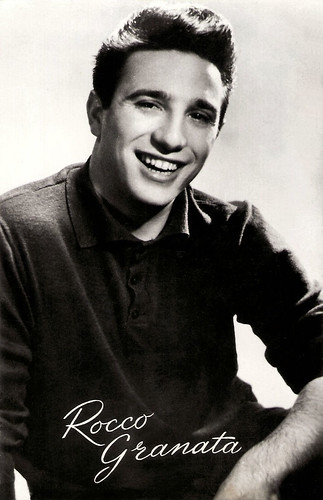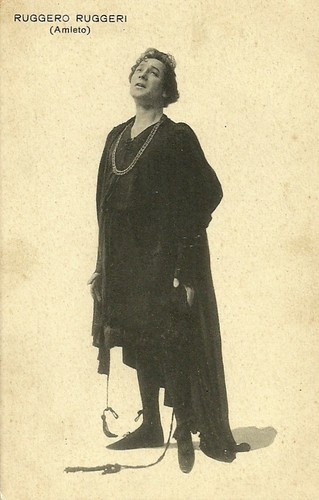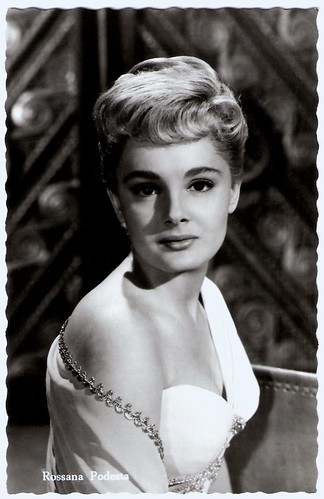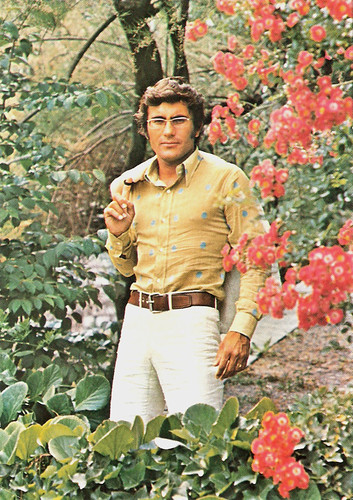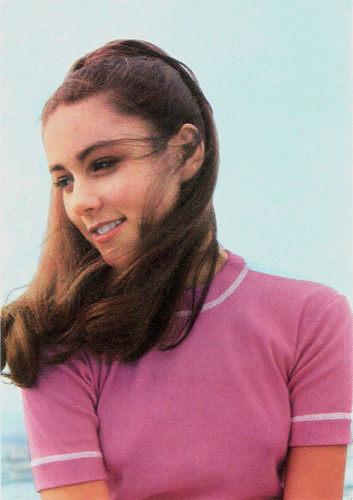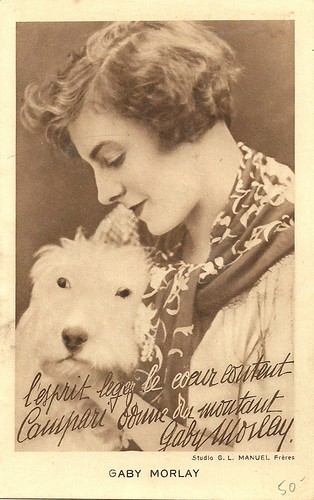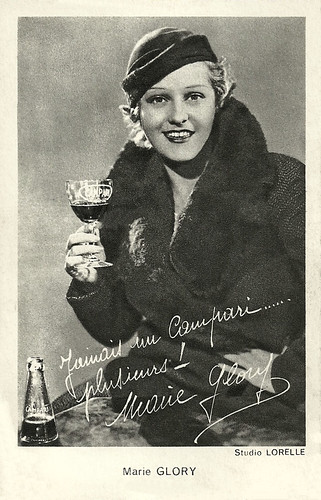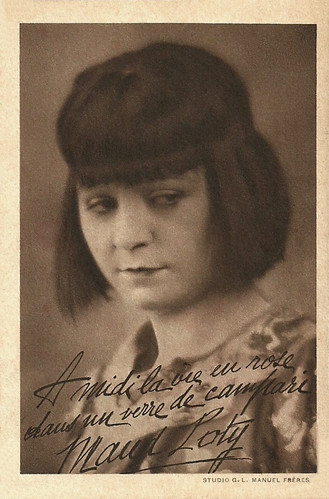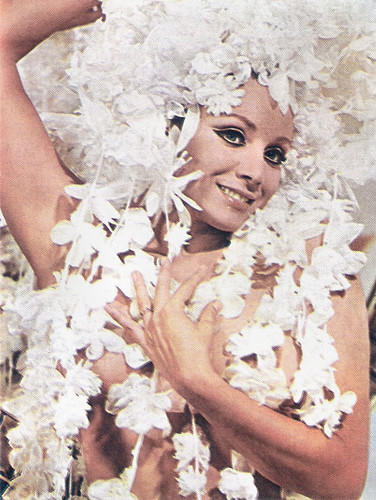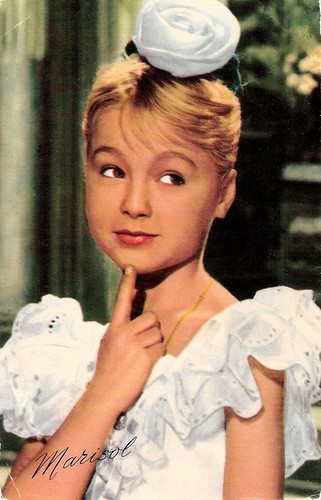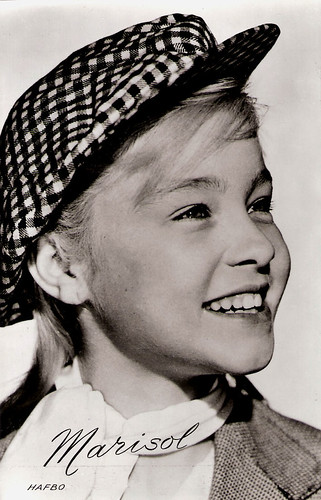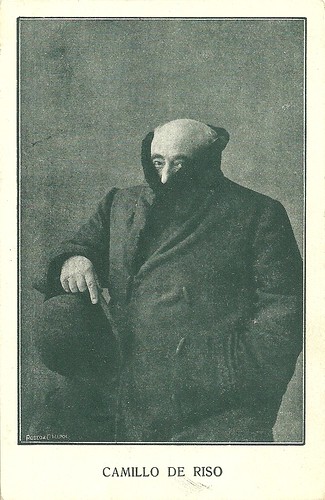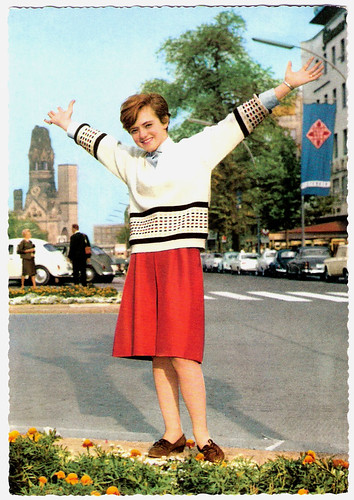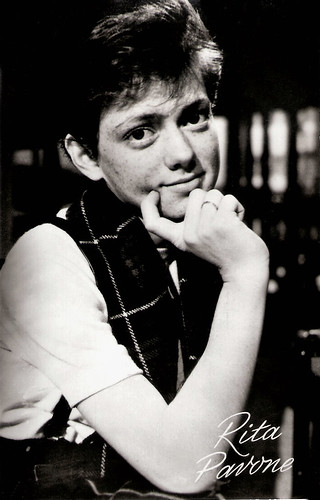French actor Jean Murat (1888-1968) became a star as a handsome young soldier in silent films of the 1920s. Later, he appeared in such classic French films as La Kermesse Heroique (1935) and L'Eternel Retour (1943).
![Jean Murat]()
French postcard by Viny, no. 48. Photo: C.F.C.
![Jean Murat]()
French postcard, no. 56. Photo: Studio Rudolph.
Handsome and Honourable Young Man
Jean Murat was born in Périgueux in the Dordogne in 1888. He studied in Périgueux and Rennes, and also in Indochina. Murat started his career as a correspondent in Berlin for a French newspaper. After serving in the First World War as a news correspondent, he began an acting career. He made his first, uncredited film appearance in Mothers of Men (Edward José, 1921). His first major role was in Souvent Femme Varie/Forsaking All Others (Jean Legrand, 1923) opposite Claude France. He played supporting parts in the epic silent version of Georges Bizet’s opera Carmen (Jacques Feyder, 1926) starring Raquel Meller, the drama La proie du vent/The Prey of the Wind (René Clair, 1927) with Charles Vanel, and the last (silent) film of Hollywood star Constance Talmadge, the society comedy Vénus (Louis Mercanton, 1929). Apart from the handsome and honourable young man roles he also played unsympathetic roles in films like La galerie des monstres/The Gallery of Monsters (Jaque Catelain, 1924) with Lois Moran. He also appeared in several German productions such as Valencia (Jaap Speyer, 1927) with María Dalbaicín and Oscar Marion, Heimweh/Homesick (Gennaro Righelli, 1927) starring Mady Christians, and Flucht aus der Hölle/Escape from Hell (Georg Asagaroff, 1928) with Fritz Alberti. A success was his role in the early talkie La Nuit est à Nous/The Night is Ours (Roger Lion, Henry Roussel, 1928) with Marie Bell. This Ufa production was an alternate language version of Die Nacht gehört uns/The Night is Ours (Carl Froelich, Henry Roussel, 1929) with Charlotte Ander and Hans Albers. The sound film allowed audiences to hear his beautiful deep voice. Another success was the Paramount production Un Trou dans le Muir/The Hole In the Wall (René Barberis, 1930) with Dolly Davis, based on a play by Yves Mirande. He also appeared opposite the Italian diva Francesca Bertini in La femme d'une nuit/Woman of One Night (Marcel L'Herbier, 1930).
![Jean Murat]()
French postcard by Cinémagazine-Edition, Paris, no. 187.
![Jean Murat]()
French postcard. Photo: Studio Lorelle, Paris.
![Jean Murat]()
French postcard by Cinémagazine-Sélection, Paris, no. 647.
Eternal Return
Even in his forties, Jean Murat retained the youthful leading man looks that had vaulted him to stardom. In 1931 he married the gorgeous actress Annabella. Together they starred in films like Paris-Méditerranée/Companion Wanted (Joe May, 1932), Mademoiselle Josette, ma femme/Miss Josette, My Wife (André Berthomieu, 1933) and L'équipage/Flight into Darkness (Anatole Litvak, 1935). The pair divorced in 1938. Among Murat’s most famous roles were the Duke in La Kermesse Heroique/Carnival in Flanders (Jacques Feyder, 1935) and Marc in L'Eternel Retour/Eternal Return (Jean Delannoy, 1943) starring Jean Marais. La Kermesse Heroique is set during the war between the Dutch and Spanish. A tiny village in Flanders is invaded by Spanish troops. The townsfolk have heard of Spanish cruelties in other towns, and decide to deflect the vanquishers with a lavish carnival. The award winning film was banned in Germany. Josef Goebbels caught on that director Jacques Feyder and scenarists Bernard Zimmer and Charles Spaak were drawing deliberate parallels between the Spanish and the then-burgeoning Nazis. At Films de France,James Travers writes: “This enduring classic of French cinema is often cited as director Jacques Feyder’s finest film and it certainly earned him great acclaim on its release in 1935.” L'Eternel Retour is a translation of the Tristan and Isolde legend into contemporary terms. According to Hal Erickson at AllMovie, “the dream-like quality of Eternal Return is due more to the input of screenwriter Jean Cocteau than director Delannoy. The film, with its mystical trappings and ethereal performances, can now be viewed as a precursor to Cocteau's own Beauty and the Beast.” James Travers at Films de France notes: “The result is an intensely moving film about love, jealousy and malice, captivating in its lyrical charm, yet haunting in its assessment of the worst in human nature.”
![Jean Murat]()
German postcard by Ross Verlag, no. 3950/1, 1928-1929. Photo: United Artists.
![Jean Murat, Käthe von Nagy]()
German postcard by Ross Verlag, no. 7131/2, 1932-1933. Photo: Ufa.
![Jean Murat]()
German postcard by Ross Verlag, no. 8894/1, 1933-1934 Photo: Ufa.
Lady Chatterley’s Lover
From the 1940s on, Jean Murat became a bit old for the roles of handsome leading man, and he interpreted mainly supporting roles in such films as Bethsabée (Léonide Moguy, 1947) with Danielle Darrieuxand Georges Marchal. Murat's handful of English-languages appearances include On the Riviera (Walter Lang, 1951) with Danny Kaye and the MGM musical Rich, Young and Pretty (Norman Taurog, 1951) starring Jane Powell. Hal Erickson writes that “neither of which were worthy of his talents”. Among his better known French films were Si Versailles m’était conté/Royal Affairs in Versailles (Sacha Guitry, 1954), the Jean-Paul Sartre adaptation Huis Clos/No Exit (Jacqueline Audry, 1954) with Arletty, and L'Amant de Lady Chatterley/Lady Chatterley’s Lover (Marc Allégret, 1955) starring Danielle Darrieux and based on the famously forbidden novel by D.H. Lawrence. Successful were also Les Grandes Familles/The Great Families (Denys de la Patelliere, 1958), and Les Miserables (Jean-Paul Le Chanois, 1958), both starring Jean Gabin. James Travers describes Les Grandes Familles as “a pretty run-of the-mill drama concerned with a deadly feud between two cousins of a notoriously successful family dynasty.” Among his last films were the episode L’ Envie/Envy by Edouard Molinaro in the portmanteau Les Sept Péchés Capitaux/The Seven Mortal Sins (1962), and the Jayne Mansfield vehicle It Happened in Athens (Andrew Marton, 1962). Jean Murat died in 1968 by coronary thrombosis in Aix-en-Provence, France. He was 79. He and Annabella had a daughter.
![Jean Murat]()
French postcard by A.N., Paris, no. 819. Photo: Studio Lorelle / Film Pathé-Natan.
![Jean Murat]()
French postcard by Editions O.P., Paris, no. 17. Photo: Star.
Scenes from L'Eternel Retour/Eternal Return (1943). Source: adhepe (YouTube).
Sources: Hal Erickson (AllMovie), James Travers (Films de France), Wikipedia (French), and IMDb.
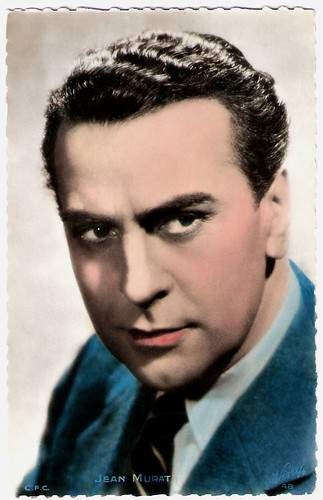
French postcard by Viny, no. 48. Photo: C.F.C.

French postcard, no. 56. Photo: Studio Rudolph.
Handsome and Honourable Young Man
Jean Murat was born in Périgueux in the Dordogne in 1888. He studied in Périgueux and Rennes, and also in Indochina. Murat started his career as a correspondent in Berlin for a French newspaper. After serving in the First World War as a news correspondent, he began an acting career. He made his first, uncredited film appearance in Mothers of Men (Edward José, 1921). His first major role was in Souvent Femme Varie/Forsaking All Others (Jean Legrand, 1923) opposite Claude France. He played supporting parts in the epic silent version of Georges Bizet’s opera Carmen (Jacques Feyder, 1926) starring Raquel Meller, the drama La proie du vent/The Prey of the Wind (René Clair, 1927) with Charles Vanel, and the last (silent) film of Hollywood star Constance Talmadge, the society comedy Vénus (Louis Mercanton, 1929). Apart from the handsome and honourable young man roles he also played unsympathetic roles in films like La galerie des monstres/The Gallery of Monsters (Jaque Catelain, 1924) with Lois Moran. He also appeared in several German productions such as Valencia (Jaap Speyer, 1927) with María Dalbaicín and Oscar Marion, Heimweh/Homesick (Gennaro Righelli, 1927) starring Mady Christians, and Flucht aus der Hölle/Escape from Hell (Georg Asagaroff, 1928) with Fritz Alberti. A success was his role in the early talkie La Nuit est à Nous/The Night is Ours (Roger Lion, Henry Roussel, 1928) with Marie Bell. This Ufa production was an alternate language version of Die Nacht gehört uns/The Night is Ours (Carl Froelich, Henry Roussel, 1929) with Charlotte Ander and Hans Albers. The sound film allowed audiences to hear his beautiful deep voice. Another success was the Paramount production Un Trou dans le Muir/The Hole In the Wall (René Barberis, 1930) with Dolly Davis, based on a play by Yves Mirande. He also appeared opposite the Italian diva Francesca Bertini in La femme d'une nuit/Woman of One Night (Marcel L'Herbier, 1930).

French postcard by Cinémagazine-Edition, Paris, no. 187.

French postcard. Photo: Studio Lorelle, Paris.

French postcard by Cinémagazine-Sélection, Paris, no. 647.
Eternal Return
Even in his forties, Jean Murat retained the youthful leading man looks that had vaulted him to stardom. In 1931 he married the gorgeous actress Annabella. Together they starred in films like Paris-Méditerranée/Companion Wanted (Joe May, 1932), Mademoiselle Josette, ma femme/Miss Josette, My Wife (André Berthomieu, 1933) and L'équipage/Flight into Darkness (Anatole Litvak, 1935). The pair divorced in 1938. Among Murat’s most famous roles were the Duke in La Kermesse Heroique/Carnival in Flanders (Jacques Feyder, 1935) and Marc in L'Eternel Retour/Eternal Return (Jean Delannoy, 1943) starring Jean Marais. La Kermesse Heroique is set during the war between the Dutch and Spanish. A tiny village in Flanders is invaded by Spanish troops. The townsfolk have heard of Spanish cruelties in other towns, and decide to deflect the vanquishers with a lavish carnival. The award winning film was banned in Germany. Josef Goebbels caught on that director Jacques Feyder and scenarists Bernard Zimmer and Charles Spaak were drawing deliberate parallels between the Spanish and the then-burgeoning Nazis. At Films de France,James Travers writes: “This enduring classic of French cinema is often cited as director Jacques Feyder’s finest film and it certainly earned him great acclaim on its release in 1935.” L'Eternel Retour is a translation of the Tristan and Isolde legend into contemporary terms. According to Hal Erickson at AllMovie, “the dream-like quality of Eternal Return is due more to the input of screenwriter Jean Cocteau than director Delannoy. The film, with its mystical trappings and ethereal performances, can now be viewed as a precursor to Cocteau's own Beauty and the Beast.” James Travers at Films de France notes: “The result is an intensely moving film about love, jealousy and malice, captivating in its lyrical charm, yet haunting in its assessment of the worst in human nature.”
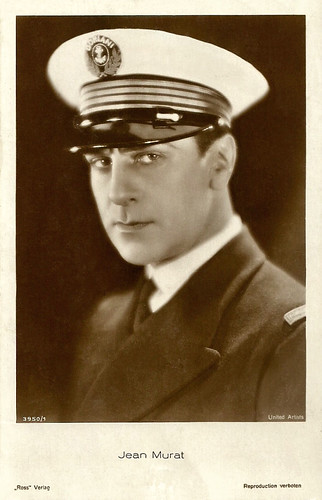
German postcard by Ross Verlag, no. 3950/1, 1928-1929. Photo: United Artists.
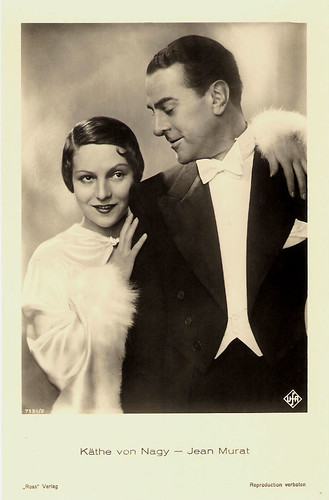
German postcard by Ross Verlag, no. 7131/2, 1932-1933. Photo: Ufa.

German postcard by Ross Verlag, no. 8894/1, 1933-1934 Photo: Ufa.
Lady Chatterley’s Lover
From the 1940s on, Jean Murat became a bit old for the roles of handsome leading man, and he interpreted mainly supporting roles in such films as Bethsabée (Léonide Moguy, 1947) with Danielle Darrieuxand Georges Marchal. Murat's handful of English-languages appearances include On the Riviera (Walter Lang, 1951) with Danny Kaye and the MGM musical Rich, Young and Pretty (Norman Taurog, 1951) starring Jane Powell. Hal Erickson writes that “neither of which were worthy of his talents”. Among his better known French films were Si Versailles m’était conté/Royal Affairs in Versailles (Sacha Guitry, 1954), the Jean-Paul Sartre adaptation Huis Clos/No Exit (Jacqueline Audry, 1954) with Arletty, and L'Amant de Lady Chatterley/Lady Chatterley’s Lover (Marc Allégret, 1955) starring Danielle Darrieux and based on the famously forbidden novel by D.H. Lawrence. Successful were also Les Grandes Familles/The Great Families (Denys de la Patelliere, 1958), and Les Miserables (Jean-Paul Le Chanois, 1958), both starring Jean Gabin. James Travers describes Les Grandes Familles as “a pretty run-of the-mill drama concerned with a deadly feud between two cousins of a notoriously successful family dynasty.” Among his last films were the episode L’ Envie/Envy by Edouard Molinaro in the portmanteau Les Sept Péchés Capitaux/The Seven Mortal Sins (1962), and the Jayne Mansfield vehicle It Happened in Athens (Andrew Marton, 1962). Jean Murat died in 1968 by coronary thrombosis in Aix-en-Provence, France. He was 79. He and Annabella had a daughter.

French postcard by A.N., Paris, no. 819. Photo: Studio Lorelle / Film Pathé-Natan.

French postcard by Editions O.P., Paris, no. 17. Photo: Star.
Scenes from L'Eternel Retour/Eternal Return (1943). Source: adhepe (YouTube).
Sources: Hal Erickson (AllMovie), James Travers (Films de France), Wikipedia (French), and IMDb.
